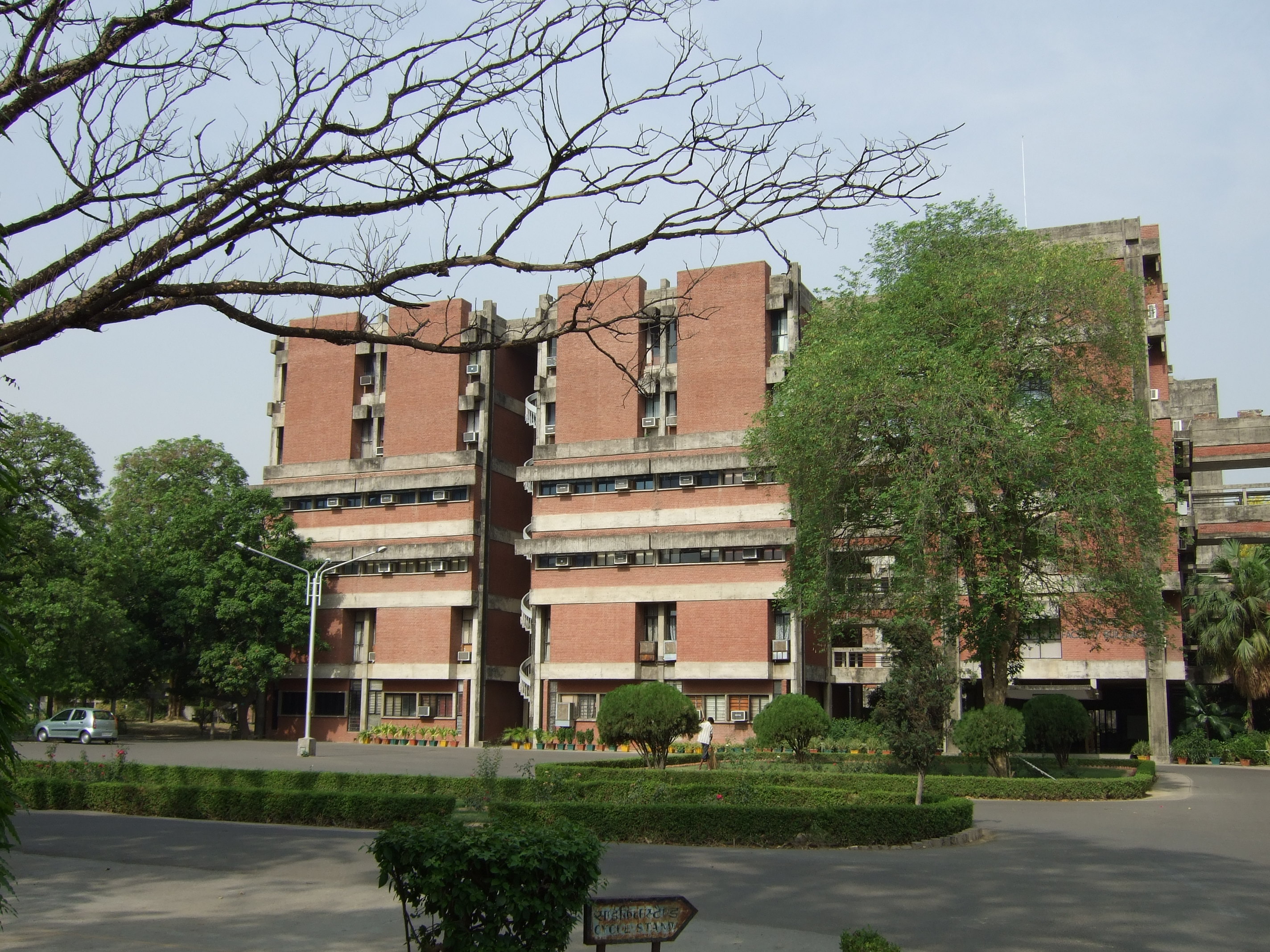|
Murali Sastry
Murali Sastry (born 1959) is an Indian material chemist, nanomaterial scientist and the chief executive officer of IITB-Monash Research Academy. He is a former chief scientist and Tata Chemicals and a former senior scientist at National Chemical Laboratory. He is known for his studies on surfaces, films and materials chemistry and is an elected fellow of Maharashtra Academy of Sciences and the Indian Academy of Sciences The Council of Scientific and Industrial Research, the apex agency of the Government of India for scientific research, awarded him the Shanti Swarup Bhatnagar Prize for Science and Technology, one of the highest Indian science awards, in 2002, for his contributions to chemical sciences. Biography Murali Sastry, born on 10 June 1959 in the south Indian state of Tamil Nadu, completed his master's degree in chemistry in 1982 at the Indian Institute of Technology, Madras and continued at the institute to secure a PhD in thin film technology in 1987 before doing hi ... [...More Info...] [...Related Items...] OR: [Wikipedia] [Google] [Baidu] |
Tamil Nadu
Tamil Nadu (; , TN) is a States and union territories of India, state in southern India. It is the List of states and union territories of India by area, tenth largest Indian state by area and the List of states and union territories of India by population, sixth largest by population. Its capital and largest city is Chennai. Tamil Nadu is the home of the Tamil people, whose Tamil language—one of the longest surviving Classical languages of India, classical languages in the world—is widely spoken in the state and serves as its official language. The state lies in the southernmost part of the Indian peninsula, and is bordered by the Indian union territory of Puducherry (union territory), Puducherry and the states of Kerala, Karnataka, and Andhra Pradesh, as well as an international maritime border with Sri Lanka. It is bounded by the Western Ghats in the west, the Eastern Ghats in the north, the Bay of Bengal in the east, the Gulf of Mannar and Palk Strait to the south-eas ... [...More Info...] [...Related Items...] OR: [Wikipedia] [Google] [Baidu] |
Chemical Research Society Of India
Chemical Research Society of India (CRSI) is an India based scientific society A learned society (; also learned academy, scholarly society, or academic association) is an organization that exists to promote an academic discipline, profession, or a group of related disciplines such as the arts and science. Membership may ... dedicated to field of chemistry. It was established in 1999 as a part of celebrating India's 50th anniversary of independence. C. N. R. Rao became its founder president and the organization currently has 1500 lifetime members. References {{authority control Chemistry societies Scientific organisations based in India 1999 establishments in Rajasthan Scientific organizations established in 1999 Organisations based in Rajasthan ... [...More Info...] [...Related Items...] OR: [Wikipedia] [Google] [Baidu] |
Department Of Biotechnology
The Department of Biotechnology (DBT) is an Indian government department, under the Ministry of Science and Technology responsible for administrating development and commercialisation in the field of modern biology and biotechnology in India. It was set up in 1986. Leadership Institutes ;Autonomous Institutes * Center of Innovative and Applied Bioprocessing, Mohali * Centre for DNA Fingerprinting and Diagnostics, Hyderabad * National Institute of Animal Biotechnology, Hyderabad * National Institute of Biomedical Genomics, Kalyani * National Centre for Cell Science, Pune * National Brain Research Centre, Manesar * Kalam Institute of Health Technology, Visakhapatnam * Regional Centre for Biotechnology, Faridabad * Rajiv Gandhi Centre for Biotechnology, Thiruvananthapuram * National Institute of Immunology Delhi National Institute of Plant Genome ResearchDelhi * Translational Health Science and Technology Institute, Faridabad Institute of Life Sciences Bhubaneswar Institut ... [...More Info...] [...Related Items...] OR: [Wikipedia] [Google] [Baidu] |
Nanotechnology
Nanotechnology, also shortened to nanotech, is the use of matter on an atomic, molecular, and supramolecular scale for industrial purposes. The earliest, widespread description of nanotechnology referred to the particular technological goal of precisely manipulating atoms and molecules for fabrication of macroscale products, also now referred to as molecular nanotechnology. A more generalized description of nanotechnology was subsequently established by the National Nanotechnology Initiative, which defined nanotechnology as the manipulation of matter with at least one dimension sized from 1 to 100 nanometers (nm). This definition reflects the fact that quantum mechanical effects are important at this quantum-realm scale, and so the definition shifted from a particular technological goal to a research category inclusive of all types of research and technologies that deal with the special properties of matter which occur below the given size threshold. It is therefore common to ... [...More Info...] [...Related Items...] OR: [Wikipedia] [Google] [Baidu] |
Nano Materials
* Nanomaterials describe, in principle, materials of which a single unit is sized (in at least one dimension) between 1 and 100 nm (the usual definition of nanoscale). Nanomaterials research takes a materials science-based approach to nanotechnology, leveraging advances in materials metrology and synthesis which have been developed in support of microfabrication research. Materials with structure at the nanoscale often have unique optical, electronic, thermo-physical or mechanical properties. Nanomaterials are slowly becoming commercialized and beginning to emerge as commodities. Definition In ISO/TS 80004, ''nanomaterial'' is defined as the "material with any external dimension in the nanoscale or having internal structure or surface structure in the nanoscale", with ''nanoscale'' defined as the "length range approximately from 1 nm to 100 nm". This includes both ''nano-objects'', which are discrete pieces of material, and ''nanostructured materials'', which have inte ... [...More Info...] [...Related Items...] OR: [Wikipedia] [Google] [Baidu] |
Thin Films
A thin film is a layer of material ranging from fractions of a nanometer (monolayer) to several micrometers in thickness. The controlled synthesis of materials as thin films (a process referred to as deposition) is a fundamental step in many applications. A familiar example is the household mirror, which typically has a thin metal coating on the back of a sheet of glass to form a reflective interface. The process of silvering was once commonly used to produce mirrors, while more recently the metal layer is deposited using techniques such as sputtering. Advances in thin film deposition techniques during the 20th century have enabled a wide range of technological breakthroughs in areas such as magnetic recording media, electronic semiconductor devices, integrated passive devices, LEDs, optical coatings (such as antireflective coatings), hard coatings on cutting tools, and for both energy generation (e.g. thin-film solar cells) and storage ( thin-film batteries). It is also being ... [...More Info...] [...Related Items...] OR: [Wikipedia] [Google] [Baidu] |
Orsay
Orsay () is a Communes of France, commune in the Essonne Departments of France, department in Île-de-France in northern France. It is located in the southwestern suburbs of Paris, France, from the Kilometre Zero, centre of Paris. A fortified location of the Vallée de Chevreuse, Chevreuse valley since the 8th century and agricultural domain of wealthy and influential people, the development of Orsay is marked by the introduction of a Rail transport, railroad in the second half of the 18th century (today the RER B of which two stations are located in Orsay) and donations which allow the construction of a hospital still active to this day. Orsay is the main home to the Paris-Saclay University. The university significantly shapes Orsay's economy as it employs about 10,000 academic workers. The city's economy is also centered on high technology, with several companies drawn to the area by the Paris-Saclay's research and development infrastructure. Seat of the Orsay campus of Pa ... [...More Info...] [...Related Items...] OR: [Wikipedia] [Google] [Baidu] |
Indian Institute Of Technology, Kanpur
The Indian Institute of Technology Kanpur (IIT Kanpur) Hindi: भारतीय प्रौद्योगिकी संस्थान कानपुर) is a public institute of technology located in Kanpur, Uttar Pradesh, India. It was declared to be an Institute of National Importance by the Government of India under the Institutes of Technology Act. The institution was established in 1959. As one of the first Indian Institutes of Technology, the institute was created with the assistance of a consortium of nine US research universities as part of the Kanpur Indo-American Programme (KIAP). History IIT Kanpur was established by an Act of Parliament in 1960 by the Government of India. The institute was started in December 1959 in a room in the canteen building of the Harcourt Butler Technological Institute at Agricultural Gardens in Kanpur. In 1963, the institute moved to its present location, on the Grand Trunk Road near Kalyanpur locality in Kanpur district. The camp ... [...More Info...] [...Related Items...] OR: [Wikipedia] [Google] [Baidu] |
Thin Film
A thin film is a layer of material ranging from fractions of a nanometer (monolayer) to several micrometers in thickness. The controlled synthesis of materials as thin films (a process referred to as deposition) is a fundamental step in many applications. A familiar example is the household mirror, which typically has a thin metal coating on the back of a sheet of glass to form a reflective interface. The process of silvering was once commonly used to produce mirrors, while more recently the metal layer is deposited using techniques such as sputtering. Advances in thin film deposition techniques during the 20th century have enabled a wide range of technological breakthroughs in areas such as magnetic recording media, electronic semiconductor devices, integrated passive devices, LEDs, optical coatings (such as antireflective coatings), hard coatings on cutting tools, and for both energy generation (e.g. thin-film solar cells) and storage ( thin-film batteries). It is also being ... [...More Info...] [...Related Items...] OR: [Wikipedia] [Google] [Baidu] |
Indian Institute Of Technology, Madras
Indian Institute of Technology Madras (IIT Madras) is a public technical university located in Chennai, Tamil Nadu, India. As one of the Indian Institutes of Technology (IITs), it is recognized as an Institute of National Importance and has been consistently rated as one of India's most prestigious universities. Founded in 1959 with technical and financial assistance from the former government of West Germany, it was the third IIT established by the Government of India. IIT Madras is ranked the top engineering institute in India by the Ministry of Education's National Institutional Ranking Framework since its inception in 2016. IIT Madras is a residential institute that occupies a campus that was formerly part of the adjoining Guindy National Park. The institute has nearly 600 faculty, 10,000 students and 1,250 administrative and supporting staff. [...More Info...] [...Related Items...] OR: [Wikipedia] [Google] [Baidu] |
Shanti Swarup Bhatnagar Prize For Science And Technology
The Shanti Swarup Bhatnagar Prize for Science and Technology (SSB) is a science award in India given annually by the Council of Scientific and Industrial Research (CSIR) for notable and outstanding research, Applied science, applied or Fundamental science, fundamental, in biology, chemistry, environmental science, engineering, mathematics, medicine, and physics. The prize recognizes outstanding Indian work (according to the view of Council of Scientific and Industrial Research, CSIR awarding committee) in science and technology. It is the most coveted award in Interdisciplinarity, multidisciplinary science in India. The award is named after the founder Director of the Council of Scientific & Industrial Research, Shanti Swaroop Bhatnagar, Shanti Swarup Bhatnagar. It was first awarded in 1958. Any citizen of India engaged in research in any field of science and technology up to the age of 45 years is eligible for the prize. The prize is awarded on the basis of contributions made thr ... [...More Info...] [...Related Items...] OR: [Wikipedia] [Google] [Baidu] |



_250_nm_by_250_nm_image_of_one-atom-thick_silver_islands_grown_on_palladium_(111)_surface.png)

